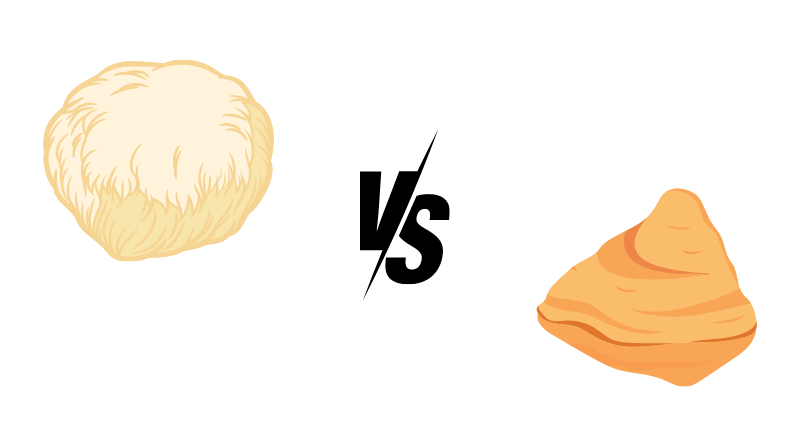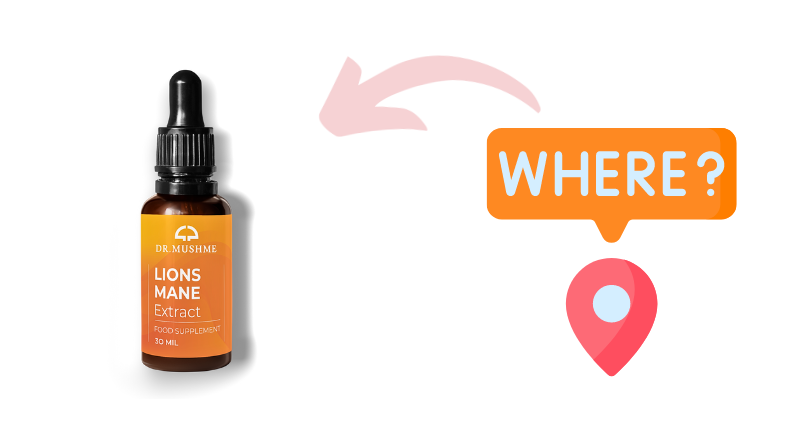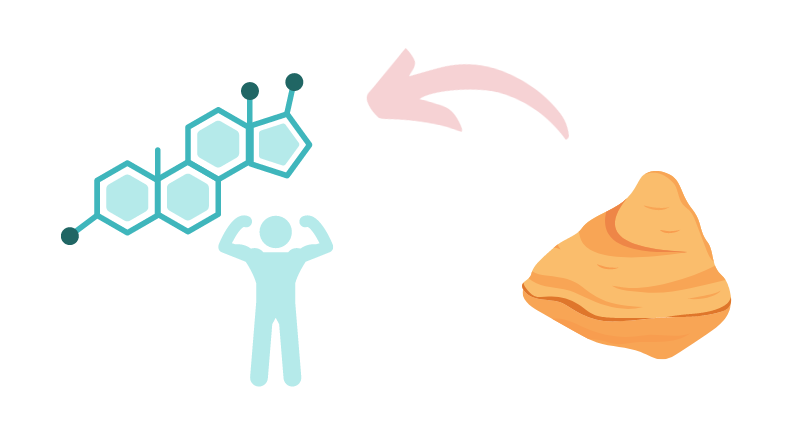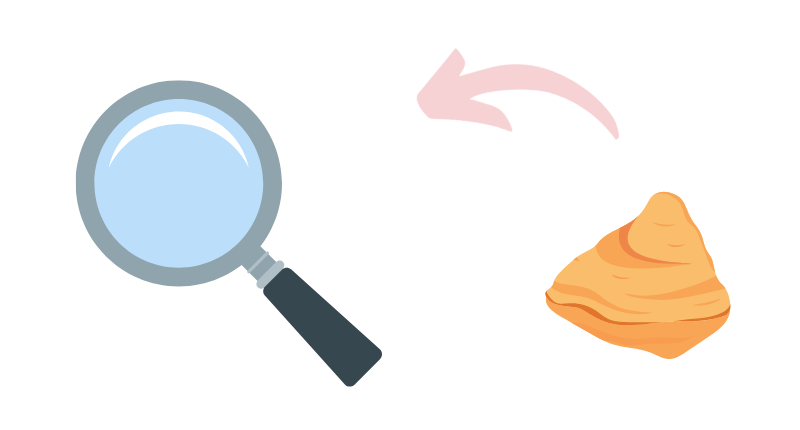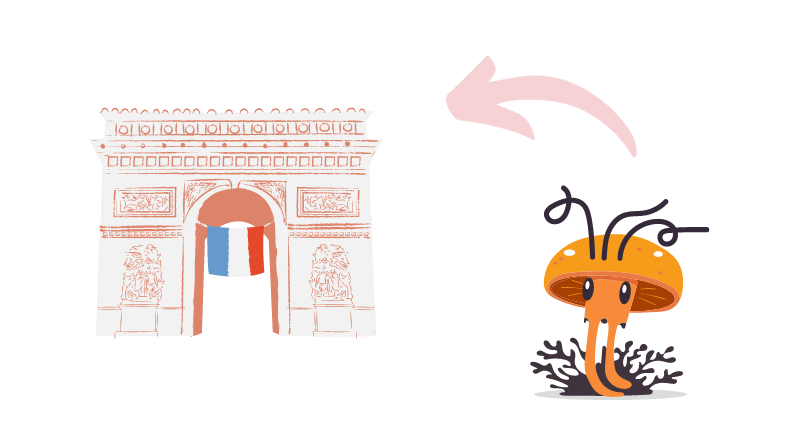In the vast world of medicinal mushrooms, the Reishi mushroom, known as Ganoderma lucidum, stands out not only for its historical significance but also for its modern-day therapeutic potential. The application of this “Mushroom of Immortality” has stretched across various health concerns, from boosting immune functions [1] to potentially fighting cancer cells [2].
One area that’s currently garnering increased interest is the potential benefits of Reishi for rheumatoid arthritis (RA) patients. This article delves deep into the world of Reishi, its various health properties, and its promising relationship with RA.
INTRODUCING REISHI
The Reishi mushroom is a traditional component in Asian medicine, especially in China, Japan, and Korea. Revered for its health-promoting properties, its name, “Lingzhi,” translates to “spiritual potency,” reflecting its status in ancient medicine.
From its woody texture to its vibrant red cap, every part of this mushroom exudes a sense of wellness, which modern science is now working to demystify.
EXPLORING REISHI AS A SUPPLEMENT
The increasing interest in natural health remedies has paved the way for various Reishi products, including powders, capsules, teas, and tinctures.
Among these, the Reishi tincture supplement by Dr Mush Me, which employs Ultrasonic Assisted Extraction technology, ensures that only the purest form, sourced from the fruiting body of the mushroom, reaches consumers.
RHEUMATOID ARTHRITIS: THE UNDERLYING PROBLEM
Rheumatoid arthritis is an autoimmune disorder where the body’s immune system mistakenly attacks its tissues, primarily affecting joint linings. This results in painful swelling, leading to joint deformities in severe cases.
With the severity of RA and the potential side effects of standard medications, the search for natural alternatives has become imperative.
REISHI & RHEUMATOID ARTHRITIS: INTERSECTING PATHS
Addressing Inflammation
At the heart of RA lies inflammation. Reishi’s triterpenoids, especially ganoderic acids, have showcased strong anti-inflammatory properties. These compounds can reduce inflammation [4], potentially offering relief to RA sufferers.
Modulating the Immune System
RA’s onset stems from an overactive immune system [1]. The beta-glucans in Reishi can help modulate this immune response, making it less aggressive towards the body’s tissues.
Antioxidant Capacities
Oxidative stress can exacerbate RA symptoms. Thanks to Reishi’s phenolic compounds, it can neutralize harmful free radicals [3], reducing oxidative stress and potentially slowing down RA progression.
OTHER NATURAL WAYS TO HELP RA
There are various natural remedies and lifestyle changes that may offer relief to RA patients:
- Dietary Adjustments: An anti-inflammatory diet, rich in omega-3 fatty acids, turmeric, and ginger, can help reduce inflammation.
- Physical Therapy and Exercise: Regular movement, even gentle exercises like swimming or tai chi, can help maintain joint mobility.
- Heat and Cold Treatments: Warm baths or cold packs can help reduce joint pain and inflammation.
- Acupuncture: This ancient Chinese therapy might provide pain relief for some RA patients.
- Omega-3 Supplements: Derived from fish oil, these can help reduce RA symptoms.
MORE READING: Reishi mushroom: A Natural Ally for Hair Loss?
WHY USE EXTRACTED NOOTROPICS OVER THE EDIBLE MUSHROOM ITSELF?
The mushroom industry has experienced a meteoric rise, driven partly by interest in nootropics—natural compounds believed to enhance cognitive functions.
While eating Reishi mushrooms can offer health benefits, there’s an argument to be made for the superiority of extracted nootropics, particularly those derived using Ultrasonic Assisted Extraction technology.
But why opt for the extract over the whole mushroom?
BREAKING DOWN THE MUSHROOM WALLS
Mushrooms have a tough cellular structure made of chitin, which is challenging for our digestive systems to break down [5]. This means that merely consuming the whole mushroom might not release all its beneficial compounds.
By extracting these compounds, we ensure that the body gets direct access to the bioactive constituents without the digestive limitations imposed by the mushroom’s tough cell walls.
THE SUPERIORITY OF ULTRASONIC ASSISTED EXTRACTION
Traditional extraction methods might miss out on some beneficial compounds. Enter Ultrasonic Assisted Extraction—a technology that uses ultrasonic waves to break down the cellular structures, ensuring a more comprehensive extraction of the mushroom’s beneficial components [6].
This method yields a more potent and bioavailable extract than what can be achieved through standard extraction processes.
SUBLINGUAL USE VS. EDIBLES: DIRECT ACCESS TO THE BLOODSTREAM
Sublingual administration involves placing the nootropic extract under the tongue, allowing it to be absorbed directly into the bloodstream through the mucous membranes [7].
This bypasses the digestive system, leading to faster absorption and ensuring that the extract doesn’t get degraded by stomach acids. In contrast, edibles have to navigate the complexities of the digestive system, potentially losing some potency in the process.
DIGESTIVE IMPACT: LESS IS MORE
Digesting whole mushrooms can sometimes be challenging for individuals with sensitive stomachs or specific digestive conditions. Using a concentrated extract alleviates this problem by delivering the benefits without the bulk, minimizing the chance of digestive discomfort [8].
In summary, while consuming whole Reishi mushrooms has its merits, using a carefully extracted nootropic, especially one derived using advanced extraction technologies, offers a more potent, bioavailable, and digestively friendly option.
As the saying goes, it’s not just about what you consume, but how your body assimilates it.
MOVING TOWARDS NATURAL ALTERNATIVES IN RA MANAGEMENT
The side effects of pharmaceuticals, combined with an increased awareness of natural remedies, have driven many towards holistic options for RA. With initial research pointing to the potential benefits of Reishi in this domain, many patients and practitioners are hopeful about integrating it into their RA management regimen.
However, it’s crucial to note that while Reishi offers potential benefits, it shouldn’t replace traditional treatments. It’s always best to consult with healthcare practitioners before introducing any new supplements.
THE BROADER CONTEXT: REISHI’S MULTIFACETED HEALTH BENEFITS
Apart from its potential in RA management, Reishi offers a plethora of health benefits. Its adaptogenic properties can aid in stress reduction, while its polysaccharides enhance overall immunity. Furthermore, studies have hinted at Reishi’s capabilities in improving heart health and balancing blood sugar levels.
CONCLUSION
The therapeutic potential of Reishi mushroom, especially concerning rheumatoid arthritis, offers hope to countless individuals seeking natural alternatives. As research continues to unravel the benefits of this ancient remedy, we might be on the brink of merging tradition with modern medicine for enhanced health outcomes.
REFERENCES
- El Enshasy, H., & Hatti-Kaul, R. (2013). Mushroom immunomodulators: unique molecules with unlimited applications.
- Gao, Y., Zhou, S., Jiang, W., Huang, M., & Dai, X. (2003). Effects of ganopoly (a Ganoderma lucidum polysaccharide extract) on the immune functions in advanced-stage cancer patients.
- Cör, D., Knez, Ž., & Hrnčič, M. K. (2018). Antitumour, antimicrobial, antioxidant and antiacetylcholinesterase effect of Ganoderma Lucidum terpenoids and polysaccharides: A review.
- Smina, T. P., Mathew, J., Janardhanan, K. K., & Devasagayam, T. P. A. (2011). Antioxidant activity and toxicity profile of total triterpenes isolated from Ganoderma lucidum (Fr.) P. Karst occurring in South India.
- Sharma, S. K., Gautam, N., & Atri, N. S. (2017). Chitin and chitosan: Biopolymers for wound management.
- Vinatoru, M., Mason, T. J., & Calinescu, I. (2017). Ultrasonically assisted extraction (UAE) and microwave assisted extraction (MAE) of functional compounds from plant materials.
- Dewitt, A. M., & Bhattachar, S. (2015). Sublingual administration and oral absorption: Molecular mechanisms and pharmaceutical considerations.
- Hobbs, C. (2004). Medicinal Mushrooms: An Exploration of Tradition, Healing, and Culture.


